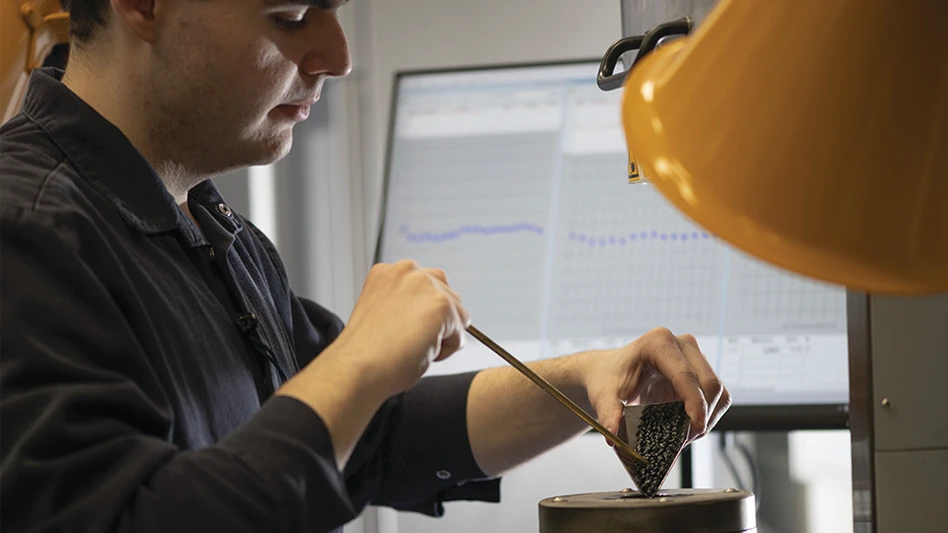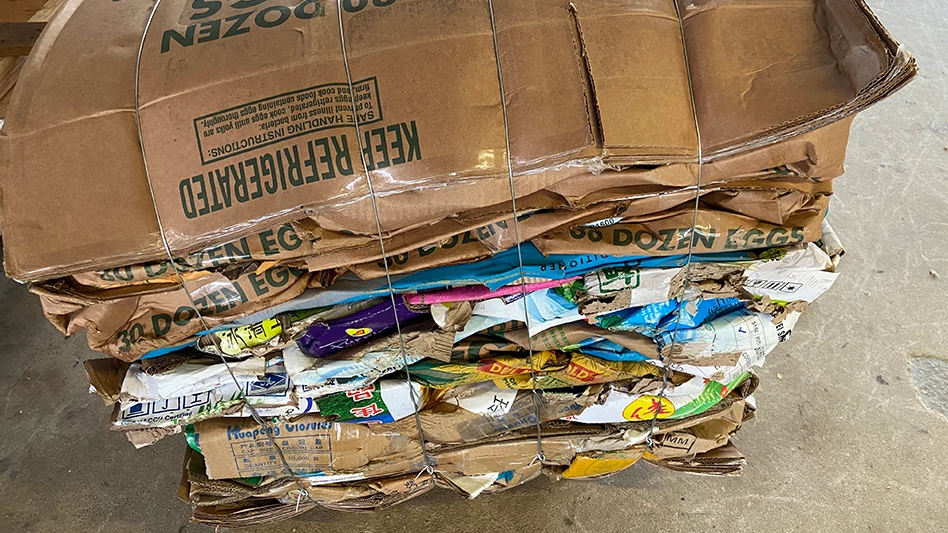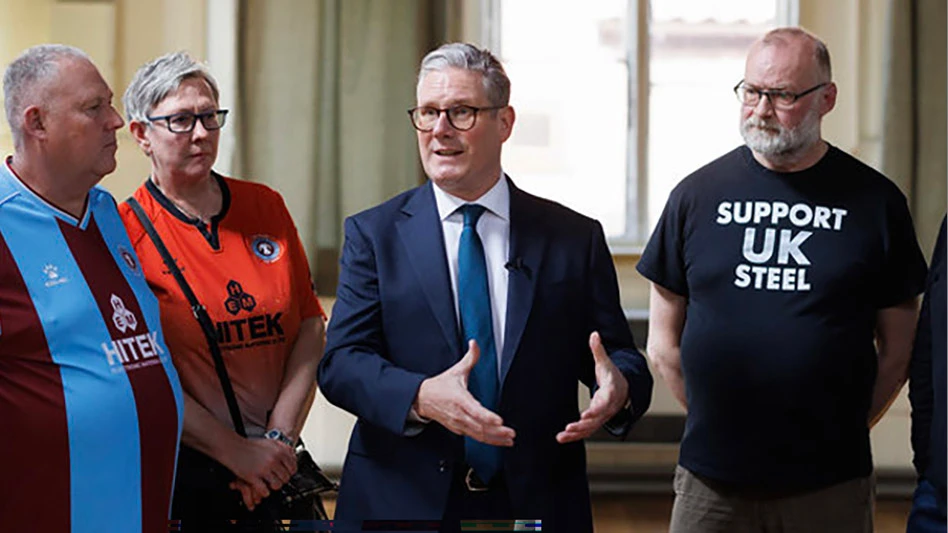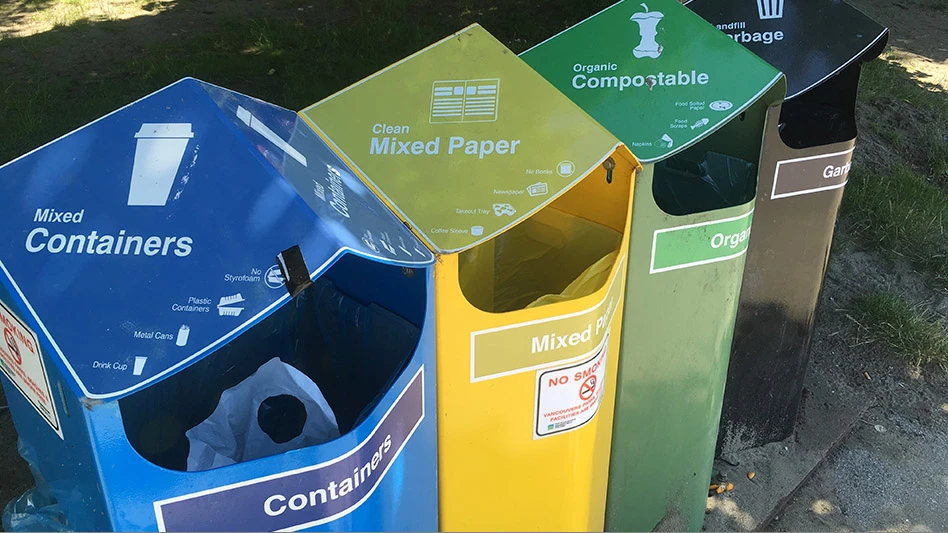 When Lewis Griffith comes into work these days, he gets to see firsthand the results of his previous job with the city of Tacoma.
When Lewis Griffith comes into work these days, he gets to see firsthand the results of his previous job with the city of Tacoma.
Griffith is the assistant division manager responsible for on-site operations at the new transfer station operated by the city’s solid waste utility. Before moving into this position, as a member of Tacoma’s engineering department, he was on the design team that developed this award-winning facility.
Part of the 190-acre Tacoma Recovery & Transfer Center, the new 83,000-square-foot transfer station opened in the fall of 2011. Handling 165,000 tons of garbage per year, the station achieves a vision of maximum flexibility, able to adapt to variable waste streams and traffic demands. The ultimate aim was to increase the volume of material diverted from the landfill into various recycling streams.
The city had set its sights on earning LEED (Leadership in Energy and Environmental Design) certification received LEED Gold standing for its efforts. SWANA (Solid Waste Association of North America), Silver Spring, Maryland, recognized the city’s effort with its Transfer Station Award of Excellence in 2013.
With control
Near the same time Griffith took the reins to manage the transfer station, he saw the operation take another big step toward its goal at the beginning of 2014 with the commissioning of a new Sennebogen 821 R-HD material handler.
Griffith says, “We designed the facility with a material handler in mind. We gave it a large open floor to provide more room for sorting and recovery from the waste stream. The vision was to select loads that would have more of that type of recoverable material to be dumped on the floor.”
Most of the material delivered to the transfer station is handled by wheel loaders, which push loads into compactors for disposal in the landfill.
In the middle of nowhere
John Korey knows right where his El Paso, Texas-based recycling company stands in the machine world. “El Paso is a city of 600,000, but if you look at where we’re located on a map, we’re somewhat in the middle of nowhere. It’s 750 miles to Dallas and 480 miles to Phoenix, where most folks have service presence. That leaves us out on our own here.”
To keep its ferrous scrap moving, Korey, W Silver Recycling regional operations manager, recently acquired new Sennebogen 830 M scrap handlers.
“We were having challenges here with uptime, parts availability and overall support,” Korey says of the material handlers the Sennebogen machines replaced at W Silver Recycling’s El Paso location.
The 830 M machines in W Silver Recycling’s El Paso location work nine-to-10-hour shifts every day, up to six days per week, loading rail cars and gondolas with ferrous scrap destined for steel mills.
After more than one year of operation, Korey says he is pleased with the decision to bring 830 M scrap handlers into the W Silver Recycling fleet.
“Their uptime is fabulous, the fuel burn is 50 percent less than the machines they replaced, and they’re very intuitive to operate,” he says of the 830 M machines.
Korey adds, “We are a recycling company, and it’s important to us to show that we walk the talk.”

The 821 R-HD machine is used to sort recyclables and to pick out oversize items that are too large for the compactors.
Mike Chapin is one of the division’s heavy equipment operators who received training from Sennebogen to run the 58,000-pound purpose-built machine. After two days of orientation on the new equipment, Chapin has been operating the 821 for about 60 percent of his 10-hour shifts.
Based on his 18 years at the controls of heavy equipment, he says he is pleased with the city’s choice of material handler for this application.
The grapple allows him to pick through mixed loads of wood, metal and cardboard from commercial and consumer sources, Chapin says.
“We also have a top-load bay with a trailer parked below the tipping floor level to receive oversize items,” he says.
“The Sennebogen is ideal for picking up those items and lowering them down into the trailer—that’s a 13-foot drop—without damaging the walking floor,” Chapin continues. “With the Sennebogen, you can actually maneuver things around and set them in there really gently.”
He says the transfer station at times receives broken or rotten telephone poles that are loaded into a trailer parked right on the tipping floor. “Thanks to the hydraulic elevating cab, I’m up high enough to see right down into the semitrailer, and I can articulate the logs any way I need to, to make a good load,” Chapin says.
Staying safe
Along with the precision and versatility of the 821, Chapin says he also appreciates the safety aspects of its design. The machine’s square footprint gives it inherent stability, without requiring outriggers, to lift and move equal loads through 360 degrees of swing. He acknowledges the value of the two safety cameras (one at the rear of the machine and one on the right side), which are provided as standard equipment.
Noting the open design and variable traffic flows in the station, he says, “[The safety cameras] are a big help. There’s a fair bit of traffic,” Chapin says, adding, “The area I’m working in is for the general public. We get anything from cars to pickup trucks to dump trailers unloading garbage and construction debris here.”
Working under-roof, Chapin recalls some early concerns about potential damage to the building’s overhead electrical and sprinkler lines. These concerns were quickly resolved with the installation of limit switches that keep the height and reach of the 821’s boom within safe limits. Chapin says he can override the limit switches, if needed, to complete a specific maneuver, however.
Stepping it up
Since the 821 arrived at the transfer station, Griffith and his team have continued to refine the recycling processes in use at the facility. Aided by the precision and flexibility of the 821, the volume of material captured for recycling from the waste stream handled in the transfer station doubled over an 18-month period.
Griffith says he believes Tacoma is on the right track. “There are so many varieties in the waste stream now; they have different characteristics, and we now have opportunities to treat them differently,” he says.
Griffith continues, “We didn’t know exactly how the material would move through the building, so we built for flexibility: a flat floor, no limiting walls or elevated areas and multiple routes through different doors that let us change traffic lanes from weekdays to weekends.”
As the Tacoma Solid Waste Management Recovery & Transfer Center evolves, its use of the 821 will evolve, as well.
“We’re looking for ways to have the material handler do the bulk sorting, and then do some hand sorting or put the material on the conveyor for some kind of further process,” he says.
“That’s kind of in the future … looking at our options,” Griffith says.
This feature was submitted on behalf of Sennebogen LLC, Stanley, North Carolina. More information is available at the company’s website www.sennebogen-na.com.

Explore the November 2015 Issue
Check out more from this issue and find your next story to read.
Latest from Recycling Today
- Commentary: How EPR is transforming the packaging industry
- Acerinox names new North American Stainless CEO
- Greenwave closes 2024 books with red ink
- Steel Dynamics nets $217M on record shipments
- Massive Chinese steelmaking rebound recorded in March
- LME looks into sustainable metal pricing
- OnePlanet Solar Recycling closes $7M seed financing round
- AMCS launches AMCS Platform Spring 2025 update





